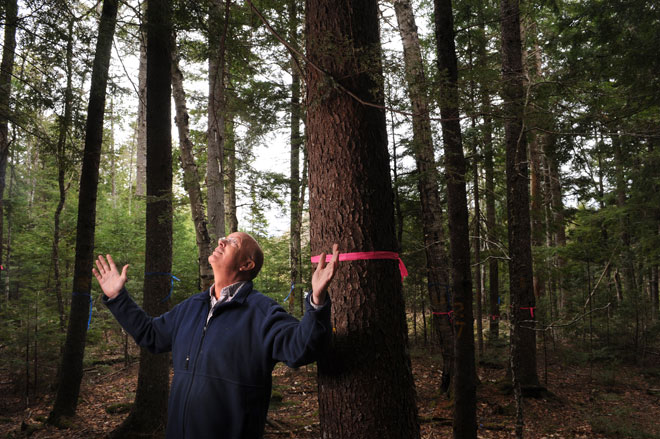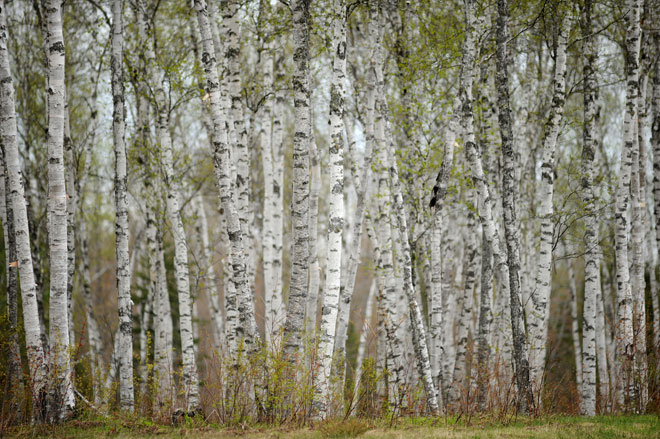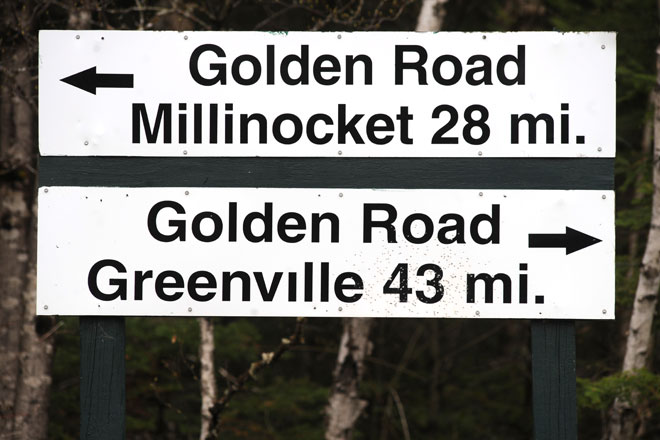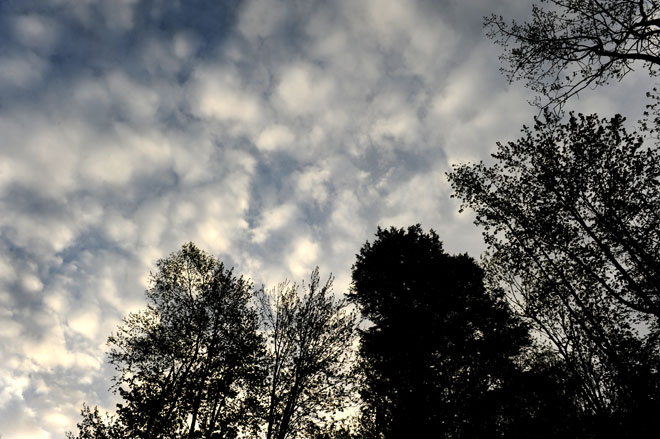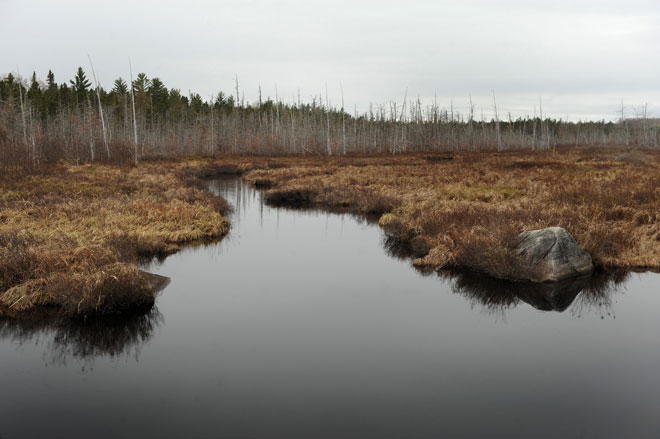For the Trees: A history of Maine’s forestland
The Maine woods. Thoreau’s wilderness haunt. The scenic headwaters of the Penobscot, Kennebec, Allagash, and St. Johns rivers. Ten million acres of commercial forestland. Fishing camps on remote ponds. Six million acres owned by small woodlot owners. Legendary lakes with Indian names – Chesuncook, Musungan, Matagamon. A renewable resource on which 24,000 jobs depend.
The beauty of the Maine woods is in the eye of the beholder, because this distinctive part of Maine is both a working forest and a cherished public resource. What does its future look like? My experiences with two historic forest management companies offer two views of how owners have tried to balance these often competing imperatives.
To understand this vast region, it helps to know a little Maine history. Back in the dark ages, when Maine was still a part of Massachusetts, the unsettled northern forestlands of Maine woods were gridded off into six-mile-by-six-mile townships and sold at auction to investors to get them on tax rolls. Some of these investors were ship owners who financed risky voyages by selling shares of their cargo, that way no one owner would be wiped if the vessel were lost. Investors applied this strategy of distributed risk to acquiring forestlands in Maine, which explains why Maine forests have a history of common undivided ownerships and complicated, cooperative management.
One of these early investors was David Pingree, known as the “Merchant Prince of Salem,” who had made a fortune in the shipping business. Pingree astutely foresaw the decline of Salem as a major port and began buying Maine timberlands as an investment hedge in the 1840s. Eventually he acquired common undivided interests on over a million acres of Maine timberland in unorganized townships and became Maine’s largest taxpayer.
Now fast-forward to 1976. I walked into a downtown Bangor office building for a job interview with one of Maine’s legendary woodsmen, John Sinclair, the founder of the Seven Islands Land Company, which managed more than two million acres of forests for the Pingree heirs. As a newly minted forestry school graduate, I wanted more than anything else to work in the north Maine woods, about which I knew little other than what Thoreau had written about it in his travels there a century before. What Sinclair said to dissuade me made the prospect even more thrilling. “If we hired you,” he said, “you won’t be any good to us for six months, because it will take you that long to learn the road system.”
When I went to work for Seven Islands in Greenville, the era of log driving on Maine’s rivers had recently come to a close and forest companies were beginning to push miles and miles of new private roads into inaccessible areas for the first time in history. The most ambitious of all the new roads, the Golden Road, built at great expense, traversed more than 100 miles from St. Zacharie at the Quebec border along the West Branch of the Penobscot River to Great Northern’s pulp and paper mills in Millinocket. Every day huge off-road trucks carried immense loads of tree-length wood harvested from these “unorganized” forest townships.
Every Monday morning I left town and drove north along Moosehead Lake to the Golden Road and then north to a logging camp on Russell Stream, where I stayed until Friday noon with two dozen French-Canadian woodcutters. I was the only English speaker at the camp. Although to some the Allagash conjures up images of a wilderness waterway, to foresters and woodsmen the region has always been Maine’s “wood basket.” where logs from these forests have been milled into lumber, shingles, veneer, toothpicks and, of course, all manner of paper products.
At the end of each week, I would tally a sampling of the log piles as a check against the “mill scale” the company received when truckloads were delivered to sawmills all over northern Maine. Trust but verify, was our strategy. Then I would slowly retrace my route out of the woods, occasionally stopping at an unmarked intersection, getting out of the cab to lay a compass on an aerial photograph in order to navigate my way back to Greenville – just as Sinclair had predicted. The expression that a sour-looking fellow back in town had “a face like ten miles of bad road” was a feeling I knew in my bones.
My next forestry job took me to the woods in the St. Croix River Valley of northeastern Washington County, where I became a forester for the Baskahegan Company. Baskahegan managed 100,000 acres of timberland for the Milliken family near the towns of Danforth, Topsfield, and Forest City. The Milliken family roots were in Maine, but they had moved their textile operations into the South during the Depression to survive the withering effects of the economic collapse.
For reasons no one in the family can now recall, the head of the Milliken textile enterprises, Gerrish Milliken, acquired Baskahegan’s forest holdings in the 1920s and began a program of intensive harvests to pay off the 20-year mortgage on the land. But the company ran out of wood after seven years, forcing the family to close down operations and pay Baskahegan’s mortgage from textile profits for almost the next 30 years. When I was hired in 1978, Gerrish Millken’s son, Roger Milliken, Sr., had only recently agreed to resume some forestry operations because, as his son, Roger Milliken, Jr,. told me, “He was afraid that cutting meant depletion, not improvement, and he never wanted to live through that again.”
Roger Milliken, Sr. oversaw the family’s textile mills and forest holdings from Spartanburg, S.C., and was a towering figure of a man with a shock of reddish hair. He told me that the family was primarily interested in what the Baskahegan lands would be producing for timber income beginning in approximately 2020. This kind of long-term planning is the sweetest music a forester can hear, because growing a crop of trees in Maine usually takes between 40 to 60 years. All too often owners are forced to cash in a crop prematurely to pay the bills, as had happened in Baskahegan’s earlier history.
It turned out that Millken’s son, Roger Jr., who had recently moved to Maine, was deeply interested in the family’s forest ownership. And so an enjoyable part of my job entailed helping to orient Roger, Jr. to the land and the forest products business that became an important focus for his life’s work.
When I met Roger Milliken, Jr. recently to catch up on how his family’s forest ownership had fared since we last worked together, he gave me a new edition of his book, Forest For the Trees. Wonderfully illustrated with photos and maps, both old and new, the book recounts the ups and downs of the family’s nearly century-long forest ownership in the eastern Maine.
Milliken points to 1988 as a turning point for the Maine’s forest products industry. In that year Sir James Goldsmith, the international financier, bought Diamond International Co.’s mills and a million acres from Maine to New York. Goldsmith quickly sold the mills and recouped his entire investment, in essence getting the land for free. To maximize his return, Goldsmith began selling land to the highest bidders for development, especially along the shores of remote lakes, ponds and rivers, where the public had often been able to fish and hunt. Other investors sensed similar opportunities in undervalued forest ownerships, and forest landowners like Milliken recognized that Maine’s long-term pattern of ownership was essentially up for grabs.
In 1990, Congress created the Northern Forest Lands Council to deal with the threat of large-scale forest conversion. The Council grappled with how to ensure that lands could be protected as working forests while remaining accessible to fishermen, hunters, and recreational users. The central recommendation of the group was to use conservation easements as a tool to acquire the development rights on high-value forest lands and shore frontage, and maintain the traditional uses of the region’s forests, including producing a steady supply of wood products to local mills for the jobs rural communities depended upon.
At the same time, Maine voters had also supported legislation to create the Land for Maine’s Future program and voted for a series of bond issues to finance the protection of high-value developable lands, including forestland. After four years of negotiations, Roger Milliken, Jr. sold a conservation easement through this program to protect 850 acres along the shore of Spednic Lake, part of the chain of the Grand Lakes chain that forms the border between Maine and New Brunswick. The lake is famous for its landlocked salmon and small mouth bass fisheries. Milliken then used the proceeds to increase Baskahegan’s forestland base.
Roger Millken, Jr. credits his father with having “protected the Baskahegan forest from short term economic demands – he knew if we let the forest rebuild, future operations would benefit. There is an enormous amount of pride in what we have done – we’ve created a forest that is both economically and environmentally sustainable.” As he looks to the future, Milliken said, the key questions is, “What is the income stream off the land that also builds its productivity?” And then he adds, “It is up to my generation and the next to answer why we want to be landowners.”
After reconnecting with the Baskahegan, I retraced my steps back to Seven Islands Land Company in Bangor. There I met John McNulty, who became president of Seven Islands Land Company in 2008. After graduating from the University of Maine with a forestry degree in 1978, McNulty recalled, “I took one week off and then went to work Monday through Friday in a one-room camp for the next two-and-a-half years – no electricity, just gas lights, an outhouse and water we drew from a stream. That was the life.”
In 1994 Seven Islands, as the management arm of the Pingree family, took a bold step into its future by agreeing to have its management practices reviewed by an outside group, the Forest Stewardship Council (FSC), an international organization which certifies forest products that have been produced from sustainably managed forests. “That was a big step for the family—to have someone come in and run an audit on our management of the forest. Everyone was nervous—no one knew what they were going to say.” But FSC gave Seven Islands its green seal of approval, for which the family, according to McNulty, continues to derive a lot of pride. “From 1994 until 2000, the Pingree ownership was the largest private FSC-certified ownership in the world.”
In 2001 the Pingree ownership made an even bolder decision when they announced their intention to sell the development rights on three quarters of their land to the New England Forestry Foundation for $28 million. Consummated in 2003, the deal permanently protected 762,192 acres of forestlands—an area roughly the size of Rhode Island—including 2,000 miles of shore frontage along Maine scenic rivers and streams, more than 110 lakes and remote ponds with 215 miles of shoreline, 24,800 acres of deer yards, and 72,000 acres of wetlands. It created the largest forest conservation easement in American history.
Like Roger Milliken, McNulty is proud that Seven Islands has always defined its management philosophy differently from industrial forests. “We manage the forests naturally. We try to understand forest processes. What species are falling out …and then we try to stay ahead of the natural process.” McNulty thinks of the 1980s and 90s as “the industrial era” characterized by “clear cut and plant.” But he notes, “The industrial model of forestry is not around anymore.” And Roger Milliken Jr. made the same point in a slightly different way. “All the publicly held paper companies, who had owned a third of Maine’s timberland, sold their forests,” he observed.
When I went to work in the Maine woods, something less than five percent of the state’s lands were in conservation ownership. As a result of the very real threat that Maine’s spectacular forest heritage might be sold off, a conservation market emerged and stepped up to make investments in Maine’s future forest. According to Milliken, in the ten years following the first acquisition of forest easements in the mid-1990s, forest land owners, conservation organizations, and government have worked to protect over 2.6 million acres of Maine forests through easements, including over 400,000 acres owned outright by conservation organizations – over 20 percent of Maine’s ten million acres of the north Maine woods.
The commitment of forest landowners like the Pingree and Milliken families, along with other state and private conservation partners, has succeeded in protecting a great deal of the forest for future generations. But managing these forests requires a constant and complex balancing act to meet the conflicting objectives of recreational access, conservation of wild landscapes, and an economic return for private owners. For the past decade, the track record suggests that the unique history of the Maine woods will continue to be both a source of inspiration for many, who like Thoreau, loved the solitude of the Maine woods, but also the people who work within them and enliven our travels through this productive working landscape.


